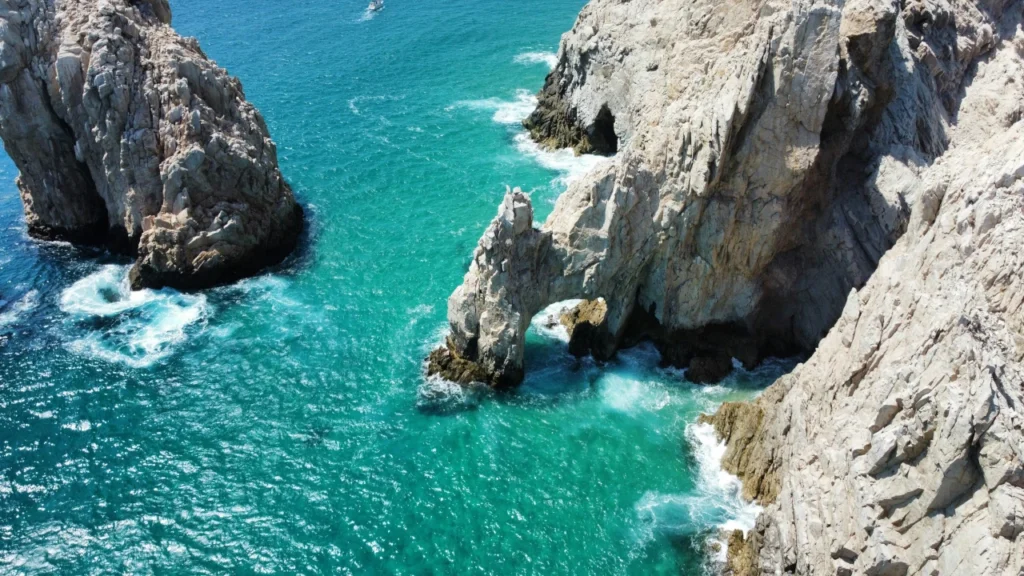Living in Mexico as an expat offers an incredible opportunity to explore a rich and diverse country. Whether you’re a seasoned traveler or new to the area, there are countless top destinations for expats to discover. From bustling cities to serene beaches and charming towns, Mexico has it all. So, pack your bags, grab your camera, and get ready for an adventure!
BEACH BLISS: TOP DESTINATIONS FOR EXPATS ALONG MEXICO’S COAST
Mexico boasts some of the most beautiful beaches in the world, making it an ideal place for expats seeking sun, sand, and sea. Whether you prefer lively beach towns or quiet coastal escapes, these top destinations for expats along Mexico’s coastline offer the perfect setting for relaxation and adventure. Grab your sunscreen and beach hat, and let’s explore these beach paradises!
1. Tulum: The Quintessential Beach Escape
Tulum is the epitome of beach paradise, with its powdery white sands and crystal-clear turquoise waters. This trendy coastal town, located on the Yucatán Peninsula, is famous for its stunning beaches, ancient Mayan ruins, and vibrant nightlife. One of the unique aspects of Tulum is the ancient ruins perched on a cliff overlooking the beach. The sight of the ruins against the backdrop of the Caribbean Sea is truly breathtaking. You can explore the archaeological site in the morning and spend your afternoon relaxing on the beach.
Tulum is also known for its eco-friendly hotels and wellness retreats, making it a perfect destination for those looking to unwind and recharge. You can practice yoga on the beach, enjoy a holistic spa treatment, or simply relax in a hammock under the palm trees. The town’s laid-back vibe, combined with its natural beauty, makes Tulum an irresistible destination for beach lovers.
2. Playa del Carmen: Popular Riviera Maya Destination for Expats
Playa del Carmen, located in the heart of the Riviera Maya, is another must-visit beach destination for expats. This bustling town offers a mix of beautiful beaches, vibrant nightlife, and world-class shopping. The main beach, Playa Mamitas, is a hotspot for both locals and visitors, known for its lively beach clubs and water sports activities. Whether you’re looking to relax on a sun lounger, swim in the warm waters, or try your hand at jet skiing or parasailing, Playa del Carmen has it all.
Beyond the beach, Playa del Carmen is famous for its Quinta Avenida (Fifth Avenue), a pedestrian street lined with shops, restaurants, and bars. Here, you can find everything from local handicrafts to designer boutiques, and the dining options range from casual beachside cafes to upscale international restaurants. In the evening, the town comes alive with music and dance, offering a vibrant nightlife scene that caters to all tastes.
For those interested in exploring beyond the town, Playa del Carmen serves as a gateway to some of the region’s most popular attractions. You can take a short ferry ride to Cozumel for world-class diving and snorkeling, or visit the nearby cenotes for a unique swimming experience in crystal-clear freshwater caves.
3. Puerto Vallarta: Coastal Destination for Expats Seeking Adventure
Nestled between the Sierra Madre mountains and the Bay of Banderas, Puerto Vallarta offers a perfect mix of traditional charm and modern amenities. Its historic center, the Malecón, is a lively boardwalk with art galleries, restaurants, and local artisans. Puerto Vallarta’s beaches, including Playa Los Muertos, Conchas Chinas, and Mismaloya, cater to both lively and tranquil atmospheres.
For expats seeking adventure, activities like snorkeling, diving, zip-lining, and whale watching make Puerto Vallarta one of the best destinations for expats in Mexico. The nearby towns of Sayulita and San Sebastián del Oeste add more charm and exploration opportunities.
4. Cancun: The Ultimate Beach Playground
Cancun is renowned worldwide for its stunning beaches, nightlife, and vibrant tourism scene. Its soft white sands and clear blue waters, especially at Playa Delfines, make it one of the top destinations for expats in Mexico. The Hotel Zone hosts luxury resorts, shopping centers, and nightlife venues, while cultural experiences like the Mayan ruins of El Rey and the underwater museum, MUSA, provide unique adventures.
Nearby islands like Isla Mujeres and Isla Holbox offer laid-back vibes perfect for expats looking for relaxation. Whether swimming with whale sharks or enjoying the sunsets, Cancun remains a top choice for those seeking beach paradise.
Final Thoughts
Mexico is one of the best destinations for expats thanks to its beaches, natural wonders, cultural richness, and friendly communities. From ancient ruins to tropical beaches, bustling cities to serene jungles, expats have endless opportunities for adventure, relaxation, and cultural immersion. By following safety tips and respecting local customs, your experience in Mexico will be safe, enriching, and unforgettable.
Exploring Mexico’s Natural Wonders: Top Destinations for Expats in Nature
Mexico is a country blessed with incredible natural beauty and diverse landscapes. Whether you’re an adventurer at heart or just looking for a tranquil escape, Mexico’s natural wonders offer something for everyone. From breathtaking waterfalls and lush jungles to majestic mountains and serene deserts, the country’s natural attractions are as varied as they are stunning. So, lace up your hiking boots, grab your camera, and get ready to explore!
1. Cascading Beauty: Mexico’s Waterfalls for Expats
Mexico hosts stunning waterfalls like Agua Azul in Chiapas, known for its vibrant turquoise waters, and Tamul Waterfall in San Luis Potosí, plunging over 100 meters into a turquoise pool. These natural wonders are ideal for expats seeking adventure and tranquility in Mexico’s lush environments.
2. Mountain Majesty: Hiking Peaks and Volcanoes
Volcanoes like Popocatépetl and Pico de Orizaba offer epic hiking opportunities for expats. The Sierra Madre Occidental and Copper Canyon provide more relaxed mountain exploration. These regions are among the top destinations for expats who enjoy nature, photography, and outdoor adventures.
3. Desert Wonders: Discovering Mexico’s Arid Landscapes
From the Sonoran Desert to Baja California’s Valle de los Cirios, Mexico’s deserts showcase unique flora and fauna. White Sands National Park in Coahuila provides surreal landscapes for hiking and sandboarding. Expats interested in photography and off-the-beaten-path exploration will find these deserts unforgettable.
4. Jungle Adventures: Exploring Tropical Rainforests
The Lacandon Jungle and Sian Ka’an Biosphere Reserve are havens for wildlife and biodiversity. Expats can hike, kayak, and explore hidden waterfalls or ancient Mayan ruins. Montes Azules Biosphere Reserve in Chiapas also offers accessible rainforest adventures, making Mexico one of the best destinations for expats who love nature and eco-tourism.
⸻
Cultural and Historical Sites: Top Destinations for Expats in Mexico
Mexico’s cultural heritage offers expats a rich experience of history, festivals, and art.
1. Ancient Ruins: Journey Back in Time
Chichen Itza, Teotihuacan, and Monte Albán provide historical exploration for expats fascinated by ancient civilizations. These sites rank among the top destinations for expats interested in Mayan and Zapotec culture.
2. Colonial Cities: Spanish Heritage for Expats
San Miguel de Allende, Guanajuato, and Puebla showcase Mexico’s colonial architecture, vibrant streets, and local cuisine. Expats can enjoy art galleries, markets, and cultural immersion in these cities.
3. Living Traditions: Festivals and Markets
Festivals like Día de los Muertos and Las Posadas, along with bustling markets like Mercado de la Ciudadela and Mercado Benito Juárez, offer expats a colorful experience of Mexican traditions and everyday life.
4. Art and Museums: Discovering Creative Destination for Expats
From the Frida Kahlo Museum to the National Museum of Anthropology and Soumaya Museum, Mexico City provides expats with a deep dive into art, history, and creative expression. These cultural sites are among the best destinations for expats in Mexico for art lovers.
⸻
Safety Tips for Expats Traveling in Mexico
While exploring these top destinations for expats, it’s important to stay safe. Research your destinations, secure your belongings, stay connected, respect local customs, use trusted transportation, and maintain good health. Following these tips ensures a smooth, enjoyable experience while living or traveling in Mexico.

